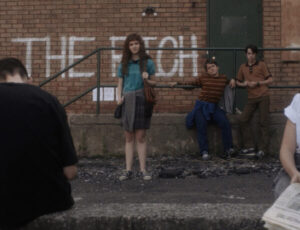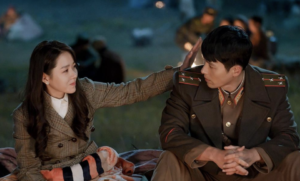On Sunday evening I had the privilege of watching the last screening of the documentary Crulic: The Path to Beyond at the Spark Animation Festival, hosted by Vancity Theatre. This was my first time watching a film at Vancity and let me quickly say this; their seats were seriously comfortable with just the right amount of leg room. After appreciating the plush theatre seats I was ready to dive into this Eastern European film, a collaboration between Polish and Romanian film making. As the movie progressed I found myself sinking further and further into my chair, dumbfounded and amazed by the tones, sounds and progression of the story.
For me, this film has secured a spot as one of the most visually stunning I have witnessed. It was impossible to look away from the screen because the detail and thought behind every word, image and dazzling piece of music came together in a glorious way. Even the people behind me, who had been furiously munching on popcorn, paused. The diverse variation of art in this movie makes it what it is; magnificent.
I usually associate animated films with children, but Crulic: The Path to Beyond, directed by Anca Damian, makes you forget all about Saturday morning cartoons when her story takes you on a disgruntling journey into the life of Claudio Crulic. Based on a true story, Damian’s documentary illustrates the haunting tale of a 33 year-old Romanian’s unfair jail sentence in Poland. Crulic is wrongly accused of a serious crime and is detained in a Polish prison while awaiting his trail. This film deals with justice and human rights, but overall a man’s dire attempt to be heard when no one seems to be listening. In jail, Crulic goes on a hunger strike in the hopes that his defiance will bring attention to his wrongful incarceration.
The success of this film can be greatly attributed to its animation; the story would suffer with the constrictions of live action. The images Damian uses range from cut-outs, to drawings, to live action intertwined with painting. It’s this variety that gives the movie such a strong flow and keeps it constantly unpredictable and impressive. Opening the movie with Crulic’s dead body, alluding to the fate of his character, gives a sombre tone to the film. Damian magically distorts this tone by using bubbly animation and upbeat music while delving into the story of his childhood. The ability to change tones is what marks Damian as such a talented director.
The majority of the film is narrated by Crulic’s character and although there are occasional English parts, explaining his deteriorating medical state, it is mostly in Romanian. This first person narration means the scenes are observed through the eyes of Crulic which give an unprecedented insight into his perception of the world. People are represented in various forms with distorted faces, missing eyes or noses, blurry silhouettes, and children embodied as mere outlines. The difference between the sharp photographs of Crulic and his relatives, versus cartoon lawyers with no features other than teeth fixed to crooked smiles, is storytelling and symbolism at its finest. The use of animation to convey characters so vividly set this animated film apart from the rest.
There is something to be said about crisp sounds; every door, foot step and breath can be heard completely, heightening the senses. Instrumentals by Piotr Dziubek are delicately composed and go from a light hearted tune in the first half, to a seamlessly darker one later on; flawlessly blending in with the story. Truthfully, Crulic: The Path to Beyond left me feeling quite gloomy, but also appreciative of where I live and the freedoms I have. That being said, this film is extremely well done, from its music to its illustrations, each and every part compliments the other.
I found nothing to be out of place or that I would think of changing. This film is a must see for any lover of documentary or animation.








